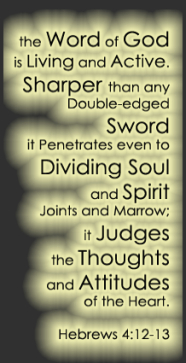Instead, God chose things the world considers foolish in order to shame those who think they are wise. And he chose things that are powerless to shame those who are powerful.
– 1 Corinthians 1:27 NLT
This is our third time looking at what I consider a significant book dealing exhaustively with various aspects of the life of Jesus. Jesus: A Theography was written in 2012 by Leonard Sweet and Frank Viola.
 A Culture of Paradox
A Culture of Paradox
Great power resides in the small, spare, simple.
A box cutter brought down a skyscraper and nearly bankrupted a nation.
A pamphlet on common sense sparked a revolution.
A song about overcoming changed the world.
A little town birthed the Messiah.
And a small room on the lower level (a dirty room called a stable) cradled the Son of God.
Little is large if God is in it.
■■■
In the Bible, Jesus always comes in surround sound. If you hear only one thing, you aren’t hearing Jesus. It is a sign of Jesus’ greatness that one thing can be said about Him and the opposite be true at the same time. Jesus is a paradox and an oxymoron rolled into one.
That makes Christianity a culture of paradox. Swiss theologian Emil Brunner pegged it right: “The hallmark of logical inconsistency clings to all genuine pronouncements of faith.”
The Living Water gospel is a cocktail of opposites, a paradoxical brew of hydrogen and oxygen, fire and wind, “Lord I believe” and “help my unbelief,” as well as…
Come and live. Come and die.
Be as wise as serpents, innocent as doves.
My yoke is easy, my burden is light.
You want to be first? Be last.
You want to find yourself? Lose yourself.
You want to be famous? Be humble.
The Prince of Peace came bringing a sword.
Give to Caesar what is Caesar’s, and to God what is God’s.
Jesus never tried to unknot His contradictions. Rather, he used these knots as rungs in the ladder to enable us to climb higher in truth and revelation.
What brings the opposites together and connects them is the sign of the cross. The Bible in general (and John’s gospel in particular) is sometimes called the Book of Signs. But the sign above all signs is the cross, which brings together the vertical and the horizontal. Jesus’ love is agape love. Agape love is made of two dimensions: love of God and love of neighbour. The horizontal and the vertical go hand in hand. How do you show love of God, love of neighbour, and vice versa?
The gospel goes parabolic beginning with Jesus’ birth, where God works little large with the whole of faith encapsulated in a very small package: one little act of love. Jesus is the definitive localization of the Creator’s universality. The incarnation is the original “small is big.”
■■■
Look again at the babe from Bethlehem and see a King who was destined to redefine power, glory, and peace. And he would do it by subverting the kingdoms of this world by a cross–an instrument made of the same material that composed the manger into which He was born: wood. Even so, God’s glory was revealed not in the manger but on the cross. And therein lay His destiny.
Excerpted from pages 52, 53-54, 71; This 448-page hardcover is a steal at $19.99 US; learn more at ThomasNelson.com.
Previous excerpts from Jesus: A Theography here at C201:
April, 2013: Intricacies in the Jesus Narrative.
May, 2013: Jesus is the New Temple.
For my friends in the UK and in Ontario and Quebec, Canada (which is 61.5% of all Canadians):
I know announcements of increased lock-downs are discouraging. I felt impressed today to share the song You Are by the band Sonic Flood which is based on Psalm 91. When I checked however, I found that we did that already, during the last lock-down in April. Still, I felt someone here needs to hear this, so check out A Psalm We All Need Right Now.









Leave a comment